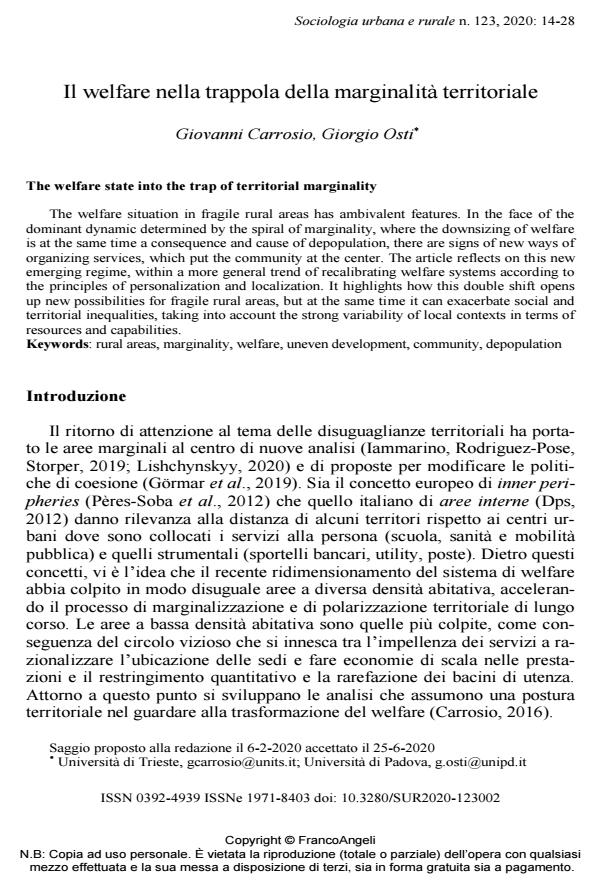The welfare state into the trap of territorial marginality
Journal title SOCIOLOGIA URBANA E RURALE
Author/s Giovanni Carrosio, Giorgio Osti
Publishing Year 2020 Issue 2020/123
Language Italian Pages 15 P. 14-28 File size 447 KB
DOI 10.3280/SUR2020-123002
DOI is like a bar code for intellectual property: to have more infomation
click here
Below, you can see the article first page
If you want to buy this article in PDF format, you can do it, following the instructions to buy download credits

FrancoAngeli is member of Publishers International Linking Association, Inc (PILA), a not-for-profit association which run the CrossRef service enabling links to and from online scholarly content.
The welfare situation in fragile rural areas has ambivalent features. In the face of the dominant dynamic determined by the spiral of marginality, where the downsizing of welfare is at the same time a consequence and cause of depopulation, there are signs of new ways of organizing services, which put the community at the center. The article reflects on this new emerging regime, within a more general trend of recalibrating welfare systems according to the principles of personalization and localization. It highlights how this double shift opens up new possibilities for fragile rural areas, but at the same time it can exacerbate social and territorial inequalities, taking into account the strong variability of local contexts in terms of resources and capabilities.
Keywords: Rural areas, marginality, welfare, uneven development, community, depopulation
- Territories at risk of abandonment in Italy and hypothesis of repopulation Teresa Amodio, in Belgeo /2022
DOI: 10.4000/belgeo.57229 - Le disuguaglianze territoriali in Italia Cause, forme, conseguenze Giovanni Carrosio, (ISBN:978-88-6969-991-7)
- Are the in-work poor more disadvantaged in urban areas? An analysis of housing affordability in Italy Claudia Colombarolli, in Housing Studies /2025 pp.1732
DOI: 10.1080/02673037.2024.2369144
Giovanni Carrosio, Giorgio Osti, Il welfare nella trappola della marginalità territoriale in "SOCIOLOGIA URBANA E RURALE" 123/2020, pp 14-28, DOI: 10.3280/SUR2020-123002